#North Canterbury
Explore tagged Tumblr posts
Text



hatfield and the north
#hi phil <3#dave stewart#phil miller#pip pyle#hatfield and the north#Frippost#canterbury scene#progressive rock
16 notes
·
View notes
Text
Suggestions for Tumblr's next book club
With Dracula Daily on the horizon again, I've been pondering what other out-of-copyright novels we might like to consider reading very slowly. Here are my ideas! And if any of them already exist, lmk.
North and South
Author: Elizabeth Gaskell Year of publication: 1854-55 Length: 185,000 words, 52 chapters. So we could have a chapter weekly for a full year. Summary: Margaret Hale is forced to leave the rural south of England and settle in the rough, industrial north. There she clashes with mill-owner John Thornton over his treatment of his workers... Why Tumblr would like it: Enemies to Lovers! Class struggle! Fascinating historical context! Honestly, it's a great read.
Evelina
Author: Fanny Burney Year of publication: 1778 Length: 157,000 words in 84 letters. That's right, it's epistolary, and the letters are almost all sent March to October of the same year, so we could read this one in true Dracula Daily fashion. Summary: Evelina is the sheltered daughter of an aristocrat trying to make her way in the world of late 18th-century society. Why Tumblr would like it: Evelina is a likeable, relatable character. I think it'd be fun to get emails from her.
The Well of Loneliness
Author: Radclyffe Hall Year of publication: 1928 Length: 158,000 words in 56 chapters. Summary: The story of Stephen Gordon, a girl who realises at an early age that she's a lesbian, and her attempts to find love in the early 20th century. Why Tumblr would like it: It's one of the most iconic lesbian novels of the 20th century!
The War of the Worlds
Author: HG Wells Year of publication: 1897 Length: 63,000 words in 27 chapters. Summary: Alien invaders land from Mars and fuck up the south of England. Why Tumblr would like it: Alien invaders land from Mars and fuck up the south of England, come on, what's not to like?
The Moonstone
Author: Wilkie Collins Year of publication: 1868 Length: 200,000 words (so a bit of a marathon) in 51 chapters. Summary: A young English woman inherits a large Indian diamond of dubious provenance on her 18th birthday. Then it gets stolen! Why Tumblr would like it: One of the first detective novels, and supposed to be one of the best, it's a page turner with lots of suspense, twists and cliffhanger endings.
The Mysterious Affair at Styles
Author: Agatha Christie Year of publication: 1920 Length: 60,000 words in 13 chapters. Summary: The first murder mystery starring Hercule Poirot. Why Tumblr would like it: Look, you liked Glass Onion, right? And if you like this, Agatha Christie's novels are emerging from copyright at the rate of about two per year.
Les Misérables
Author: Victor Hugo Year of publication: 1862 Length: 570,000 words in the English translation (ouch) in 365 chapters. Summary: A vast, sweeping story of poverty, justice and revolution in early 19th century France. Why Tumblr would like it: Well, if you thought Moby Dick didn't have enough digressions...
The Canterbury Tales
Author: Geoffrey Chaucer Year of publication: 1387-1400 Length: 24 stories averaging 700 lines each. Summary: Some pilgrims are heading to Canterbury. They tell one another stories to pass the time. These are their stories. Why Tumblr would like it: I mean, there's a reason we still read these 600 years later. They're a fascinating insight into medieval life, but they're also - for the most part - just good fun.
If you love any of these suggestions and would really like to see it take off, reblog to help make it happen.
#tumblr book club#north and south#evelina#the well of loneliness#the war of the worlds#the moonstone#poirot#les miserables#the canterbury tales
117 notes
·
View notes
Text

✯ Round 1 ✯ Match 32 ✯
The current flag of Iisalmi, North Savo, Finland

Propaganda:
None
vs
The current flag of Christchurch, Canterbury, New Zealand (Ōtautahi, Waitaha, Aotearoa)

Propaganda:
This flag manages to include a lot of obvious and subtle symbolism. The red triangle is a reference to the southern alps--a main feature of the South Island. The four Lymphads are in reference to the four ships that arrived in the port of Lyttleton to bring British colonials to Christchurch. The lamb and wheat are in reference to the industry around Christchurch--mainly farming. the Bishop's hat is in reference to like, *christ* *church*. Except the goddamn church had been under repairs for 13, 14 years.
Tournament Policies: ✯ Choose the flag that's more meaningful to you! ✯ Be respectful of place names and cultural symbols in your commentary! ✯ If you want to submit propaganda, you may do so at the submission form linked in the pinned post. It will only be included if it is submitted before the next post with that flag is drafted and will be included in all subsequent posts the flag is featured in.
#cft polls#polls#flag: Iisalmi - North Savo - Finland#flag: Christchurch - Canterbury - New Zealand (Ōtautahi - Waitaha - Aotearoa)
8 notes
·
View notes
Text
The North Face Hoodie



Here's a nother hoodie! Colab design of The North Face x Patron Plasticfree Peaks. Rare item to find on the net but under $15.00!
Click above or here for more info and follow me for more looks for less #outfits , #bags , and #shoes !
#The North Face#Patron Plasticfree Peaks#Hoodie#Autumn fashion#fashion#aliexpress#luxury#high end fashion#outfit#canterbury
2 notes
·
View notes
Text
The Descent of Charles Rocket
This one comes with a trigger warning, because the story gets pretty dark. In fact it approaches maximum darkness. I’ve occasionally gone there in my writing, though not so often on this blog per se (since most readers seem to resent being served anything that actually matters), so a topic like this may take you by surprise. On the other hand, by now I’ve unavoidably written about over 100…
#Canterbury#Charles Claverie#Charles Rocket#Charlie Claverie#Charlie Rocket#f bomb#f word#Fabulous Motels#fuck#North Hampton#Providence#Saturday Night LIve#SNL#suicide
3 notes
·
View notes
Text
Following the adventures of Dave and Richard Sinclair...

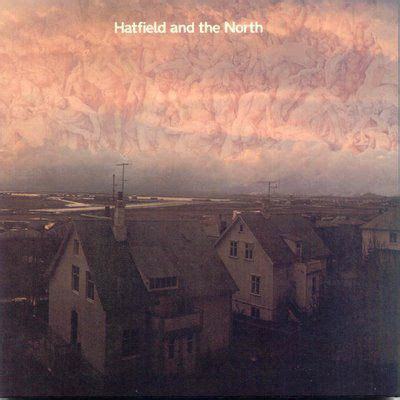
#I know who I'm voting for...#i'm curious#but have a feeling I'll be disappointed with the answer I get#Hatfield#hatfield and the north#motor home#caravan#canterbury#prog rock#prog#rock
11 notes
·
View notes
Text

Dahlia 'Bishop of Canterbury' / 'Bishop of Canterbury' Dahlia at the JC Raulston Arboretum at North Carolina State University in Raleigh, NC
#Dahlia 'Bishop of Canterbury'#Bishop of Canterbury dahlia#Dahlia#Flowers#Nature photography#Jc raulston arboretum#North Carolina State University#Ncsu#Raleigh#North Carolina
2 notes
·
View notes
Text
Nearly 400 cats killed in controversial North Canterbury competition
New Post has been published on https://petn.ws/MJYlI
Nearly 400 cats killed in controversial North Canterbury competition
Event organiser Matt Bailey told RNZ’s Checkpoint the group was a fundraising committee of farmers and their partners, who donated to their local school and donated to those in need. He said the competition started as a local pig-hunting competition then became a cat-hunting competition, as they noticed a growing number of feral cats. “The […]
See full article at https://petn.ws/MJYlI #CatsNews #8216In, #400, #Canterbury, #Cats, #Competition, #Controversial, #Killed, #Nearly, #North
1 note
·
View note
Text
Flyer Delivery Sydney
#Flyer Delivery Hornsby Region#Flyer Delivery Hills District#Flyer Delivery Upper North Shore#Flyer Delivery Fairfield#Flyer Delivery Eastern Suburbs Mc#Flyer Delivery Canterbury#Flyer Delivery Campbelltown#Flyer Delivery Camden#Flyer Delivery Blacktown#Flyer Delivery Bankstown
0 notes
Video
tumblr
La Madeleine - French Provincial House - Vaastu Designers
La Madeleine is a stunning French Provincial House located in one of the most prestigious suburbs of Paris, France. Designed by Vaastu Designers, this home is a masterpiece of architectural design and craftsmanship. With its classic French Provincial facade and intricate detailing, La Madeleine exudes a sense of luxury and elegance. From the moment you enter the grand foyer, you are greeted with a sense of opulence and sophistication that is second to none.
#French Provincial House#La Madeleine#Vaastu Designers#french provincial architect#french provincial#french provincial architects#french provincial architecture#french provincial display homes#Canterbury#Portsea#Balwyn North#Tuxen Street#French Provincial Home#French Provincial Mansion
0 notes
Text
Again, not an exhaustive list but for anyone else in the UK, these are where riots are expected today:
Aldershot - Immigration Advisors at 40 Victoria Road GU11 1TH, starting at 19:30.
Bedford - Immigration INN (Inn?) on Ford End Road MK40 4JT, at 20:00.
Birmingham - Refugee and Migrant Centre on Frederick Street B1 3HN, beginning at 20:00.
Bishop Auckland - outside the Town Hall on Market Place DL14 7NP.
Blackburn - Rafiq Immigration Services on Whalley Road BB5 1AA, at 20:00.
Blackpool - Immigration Solicitors at the Enterprise Centre on Lytham Road FY1 1EW, starting at 20:00.
Bolton - Deane & Bolton Immigration Lawyers on Chorley New Road BL1 4QR, at 20:00.
Brentford - UK Immigration Help in The Mile on 1000 Great West Road TW8 9DW, starting around 19:00.
Brighton - Raj Rayan Immigration in Queensberry House at 106 Queens Road BN1 3XF, starting either at 19:30 or 20:00.
Bristol - Gya Williams Immigration on West Street BS2 OBL, at 20:00.
Burnley - at Thompson Park on 111 Ormerod Rioad BB11 3QWat, starting at 13:00.
Canterbury - UK Immigration Clinic in the Canterbury Innovation Centre CT2 7FG, at 20:00.
Chatham - Immigration Status UK on Maidstone Road ME5 9FD, at 20:00.
Cheadle - Intime Immigration Services on Brooks Drive SK8 3TD, at 20:00.
Chelmsford - UK Immigration Information Centre on Violet Close CM1 6XG, at 20:00.
Derby - Immigration Advisory Service, Normanton Road DE23 6US, at 20:00.
Dover - Kent Immigration and Visa Advice at 5A Castle Hill Road CT16 1QG, reportedly around 20:00.
Durham - in Crook at Market Place, at 18:00. (Unsure as to whether this is the same one as in Bishop Auckland as I know Crook is near there?)
Finchley - Immigration and Nationality Services within Foundation House at 4 Percy Road N128BU, around 19:00.
Harrow - Yes UK Immigration and North Harrow Community Library within the Business Centre at 429-433 Pinner Road HA1 4HN, in North Harrow, at 19:00.
Hastings - Black Rock Immigration at 37 Cambridge Gardens TN34 1EN, at 20:00.
Hull - Conroy Baker Immigration Lawyer in Norwich House, 1 Savile Street HU1 3ES, at 20:00.
Lewisham - the Clock Tower, SE13 5JH, 19:00.
Lincoln - Immigration Lawyer Services on Carlton Mews LN2 4FJ, at 20:00.
Liverpool - Merseyside Refugee Centre in St Anne's Centre on 7 Overbury Street L7 3HJ, at 20:00.
Liverpool - Sandpiper Hotel (might be on Ormskirk Old Road? if any scousers can clarify where that is, that'd be great) at 13:00.
Middlesbrough - Immigration Advice Centre which is the Co-Operative Buildings at 251 Linthorpe Road TS1 4AT, at 20:00.
Newcastle - United Immigration Services in Artisan Unit 3, The Beacon on Westgate Road NE4 9PQ, at 20:00.
Northampton - Zenith Immigration Lawyers at 2 Talbot Road NN1 4JB, starting at 20:00.
Nottingham - East Midlands Immigration Services at 15 Stonesbury Vale NG2 7UR, at 20:00.
Oldham - somewhere on Ellen Street 0L9 6QR, at 20:00
Oxford - Asylum Welcome in Unit 7 in Newtec Place on Magdelen Road OX4 1RE, around 19:00. [Updated as of 15:53]
Peterborough - Smart Immigration Services in Laxton House at 191 Lincoln Road PE1 2PN, at 20:00.
Plymouth - in a Morrisons car park, I don't know which but I saw Victory Parade associated with it? If anyone from Plymouth can clarify, please do. Not sure on time.
Portsmouth - UK Border Agency at Kettering Terrace PO2 8QN, at 20:00
Preston - Adriana Immigration Services at 109 Church Street PR1 3BS, at 19:00 or 20:00.
Rotherham - Parker Rhodes Hickmotts, The Point S60 1BP, at 20:00.
Sheffield - City Hall on Barker's Pool S1 2JA, at 13:00.
Sheffield - White Rose Visas at 101 Wilkinson Street S10 2GJ, at 20:00.
Southampton - Y-Axis Immigration Consultants, Cumberland Place on Grosvenor Square SO15 2BG, at 20:00.
Southend - MNS Immigration Solicitors on Ditton Court Road SS0 7HG, at 20:00.
Stoke-On-Trent - ZR Visas on Metcalfe Road ST6 7AZ, in Tunstall, at 20:00.
Sunderland - North of England Refugee Service which is in Suite 12 in the Eagle Building at 201 High Street East SR1 2AX, at 20:00.
Swindon - I have no details for this, just seen that something might be kicking off there.
Tamworth - Lawrencia & Co Immigration Solicitors within the Amber Business Village on Amber Close B77 4RP, no details on time unfortunately.
Walthamstow - Waltham Forest Immigration Bureau at 187 Hoe Street E17 3AP, at 20:00.
Wigan - Support for Wigan Arrivals Project, Penson Street WN1 2LP, at 20:00.
York - only detail I've got it is York Stay City Hotel.
#england#england riots#uk#uk riots#britain#britain riots#uk politics#ukpol#signal boost#important#york#wigan#tamworth#aldershot#walthamstow#stoke-on-trent#sheffield#portsmouth#sunderland#kettering#plymouth#liverpool#lincoln#lewisham#derby#brighton#harrow#finchley#durham#cheadle
434 notes
·
View notes
Text
England doesn’t have a North-South divide. But if it did have one, Cornwall would be in the North.
Now I’m not saying there isn’t a big geographical divide between like, Manchester and Canterbury, or that the country’s a homogeneous patchwork, what I’m saying is this divide isn’t north-south and thinking about it as such masks a lot of things.
Oh, and I am, for necessity of discussing this divide, going to be ignoring the Midlands. I hope you forgive me ignoring the deep cultural ties between Birmingham and Rutland.
Map Men made a video about the North-South divide in England (https://www.youtube.com/watch?v=ENeCYwms-Cc&ab_channel=JayForeman), which focused on the line determined by Danny Dorling in 2008.
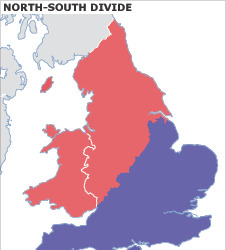
… Which isn’t a north-south divide. It’s a northwest-southeast divide, going up at more than 45 degrees – it’s more an east-west divide than it is a north-south. It also includes Wales in “the North” but we’ll get to that.
But it was a north-south divide he set out to find, so a north-south divide he sort of drew, excluding exclaves and enclaves where the metrics he was looking at would make that not a north-south divide.
Notably, several would seem to put the west country peninsula in “the North”… So what’s up with that?
(Dorling's full paper is here, and I recommend looking through the whole thing to see how he arrived at the divide he eventually concluded: https://www.dannydorling.org/wp-content/files/dannydorling_publication_id2938.pdf)
Anyway. This is what’s up with that:

This is a geological map of Great Britain (and the Isle of Man, which isn’t actually part of the UK or any of its constituent countries but I guess it’s here anyway.)
Here again, in the boundary between Jurassic and Triassic geology, is that diagonal line from the Humber to the Severn, but continuing past both. For convenience, here are those two lines superimposed on one another.

With Danny Dorling’s line (frequently following county boundaries or other administrative boundaries) in blue, and the geological divide in red.
One line was drawn in 2008, the other has existed over 200 million years.
This isn’t a coincidence – it’s the reason for the divide.
What made “the North” is the industrial revolution. And one thing that drove the industrial revolution was the mines: coal, iron, silver, tin, the rocks beneath our feet and the people who dreamed they were worth more than the people they sent into the dark to bring it into the light.
Towns grew around mines, from Walker to South Crofty, and more than just the mines defining them, it was the mines closing that would cement the divide.
“Byker Hill and Walker Shore, collier lads forever more”
“Cornish lads are fishermen and Cornish lads are miners too”
- Two folk songs about regional identity’s roots in its industry, from opposite ends of this dividing line
In the West Midlands, the Black Country didn’t earn that name with caviar; it, like Manchester and Leeds, reinvented itself when the industry collapsed: cities built in the brick ruins of the temples built to the exploitation of the workers, blackened by the smokes of the cremation of its labour industry. When the light catches the steel and glass just right, you can still see the ghosts.
Even the country life outside the cities is shaped by this geology: the terrain north-west of this line doesn’t lend itself to large, flat expanses of land for arable farming, and the divide is visible again when looking at agriculture:
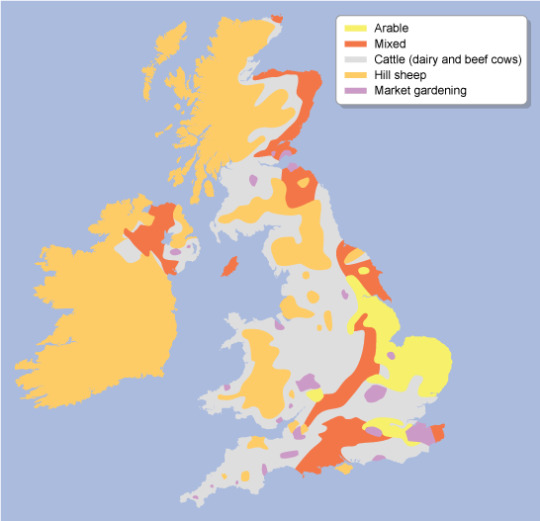
With the majority of land south of the Jurassic-Triassic line being arable, mixed and market gardening, with a fair amount of cattle in the Cotswolds and Chilterns and along the north side of the Thames, and the majority north-west of it being cattle and sheep – which are almost absent from the south side of the divide with the exception of the Isle of Wight and therefore, ironically, Cowes.
Not all farming is the same, the yearly flow of labour and of marketable goods between livestock and arable having little in common beyond being intensive work out-of-doors and taking huge amounts of land to accomplish.
But one thing that also goes hand in hand with this is that sheep aren’t mostly farmed for their meat but for their wool, and what drove industrialisation in the Pennines was the steam-loom: the mechanisation and mass-production of wool.
(Incidentally, on this map arable farming and market gardening also correlate with several types of English traditional dance: Molly, Border an East Midlands and East Riding plough dances, which began as a way for seasonal farmhands to make ends meet by busking with menaces in the winter off-season, but that’s for a later Morris ramble).
But hang on, that puts Hull on the same side of the divide as Kent, not, for example, Liverpool. So what gives there?
The East Riding isn’t built on mining - a kid with a bucket and spade could find the water table in most of the county.
Hull, and other ports of Yorkshire with it, was built on whaling – and not many industries have collapsed harder than whaling. For once, the geography of the land has little impact on this, but the geography of the sea does:
Between England and the European continent is a shallower stretch of sea called Dogger Bank – named for the Dutch cod-fishing boats known as Doggers which fished on it. But shallow water isn’t great for whales. So where is there water good for whales?
Well, whalers from Great Britain would venture as far as the Antarctic ocean in search of whales, and often hunted off Greenland – but there was water closer to home where whales did and still do frequent:
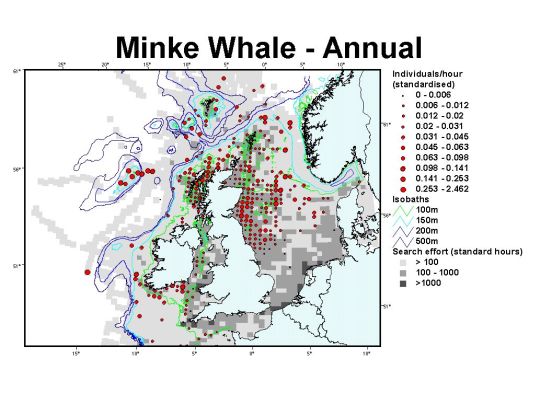
(There is still whaling in the North Sea. Around 500 minke whales are killed by Norwegian whalers each year “in objection to” the global ban on commercial whaling.)
Outside of this, there’s also a divide between port cities dealing primarily in cargo or primarily in passengers, something which is somewhat evening out by one means or another, but here’s a current map of UK passenger ports and their passenger numbers:

Or at least circles sized to correspond to their passenger numbers - source with stats: https://www.gov.uk/government/statistics/sea-passenger-statistics-all-routes-2021/sea-passenger-statistics-all-routes-2021
Compare this with a map of cargo ports by load:

Source with numbers: https://safety4sea.com/uk-ports-record-steady-performance-during-2018/
Generally showing passenger numbers getting lower the further you get from Dover, but not the same correlation with cargo (Plymouth and Holyhead both bucking this trend at a glance).
So, if not “The North” and “The South”, what name does make sense for this divide?
I propose “the South” be known as Lloegyr.
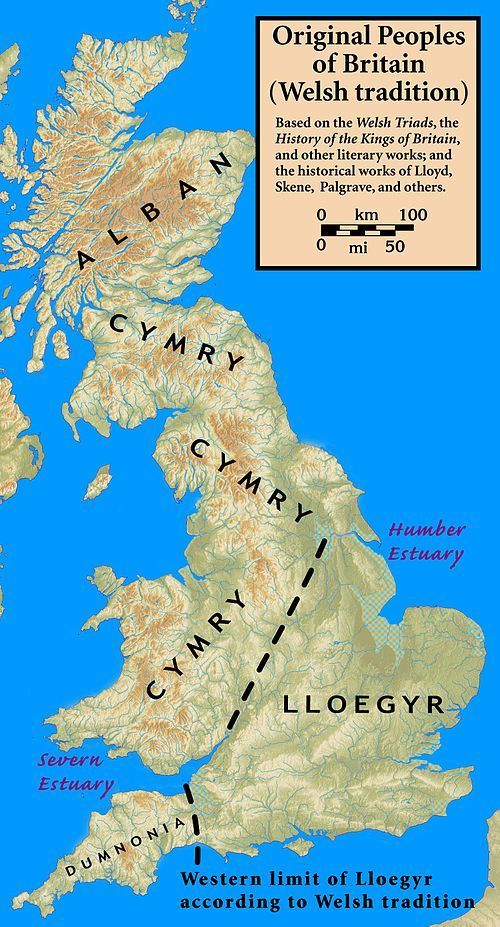
These names still exist: Domnonea still exists in Brittany both as a name for that same region from which Brittonic settlers came to Brittany and an area of Brittany named for them, and in Welsh, yr Alban is Scotland, Cymru is Wales and Lloegr is England.
Wales isn’t part of “the North”. “The North” is part of Wales.
271 notes
·
View notes
Text



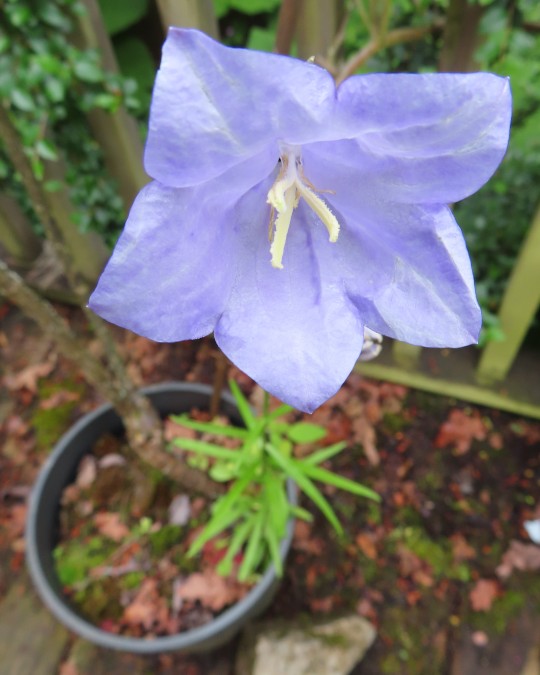
Campanula medium (Canterbury bells)
Canterbury bells are a biennial plant. They have a two-year lifecycle and they typically flower and set seed in the second year. They're noted for a four month long flowering season and do well as a cut flower in a vase. Originally from southern Europe, this flower has been cultivated in gardens since the 16th century. It is now 'naturalized' in most European countries and is slowly spreading in North America.
We planted our first Canterbury bells in Vancouver decades ago, and these flowers are their distant descendants. Obviously Canterbury bells can self-seed and move around. I certainly didn't plant that last one in a pot on the back deck. I don't think the climbing rose (the original tenant) really appreciates Campanula medium in it's personal space. This leads us to a complicated, philosophical question: When does a 'naturalized' plant become an 'invasive' plant?
Canterbury bells are showing up on various US state Invasive Species lists (California, Montana, Washington State) and have been seen growing on roadsides, far from the nearest flower bed. It's estimated that worldwide, 70% of 'naturalized/invasive' plants are garden escapees or deliberately introduced by humans. Let's just call this modern state of affairs, "The Sisterhood of the Travelling Plants" and leave it at that.
#flowers#photographers on tumblr#Canterbury bells#another bad pun#our garden#fleurs#flores#fiori#blumen#bloemen#Vancouver
102 notes
·
View notes
Text

Then, all of a sudden, light and colour returned to the world, and when Algy woke up the next morning he found that it had been completely transformed once again.
Algy realised that in his long sleep he must have missed much of the gradual changing of the seasons, for the sun was now surprisingly low in the sky, imparting a distinctive autumnal hue to the overgrown grasses and drying leaves, and the shadows were deep and long. But there was still some warmth to be found in a sheltered spot, providing one kept close to the ground and away from the chilly north-east wind, which kept trying to blow Algy's hair and feathers into his eyes in a most annoying manner.
As he looked around he could see that even the bell heather was fading now, but there were still a few bright flowers peeping out from the untamed mass of grasses and seedheads, and as Algy leaned back among the crazy tangle of the late summer meadow, he did indeed feel happily "beguiled by the last lingering of the flowery kind":
And down the hay-fields, wading ‘bove the knees Through seas of waving grass, what days I’ve gone, Cheating the hopes of many labouring bees By cropping blossoms they were perch’d upon; As thyme along the hills, and lambtoe knots, And the wild stalking Canterbury bell, By hedge-row side or bushy bordering spots, That loves in shade and solitude to dwell. And when the summer’s swarms, half-nameless, fled, And autumn’s landscape faded bleak and wild, When leaves ‘gan fall and show their berries red, Still with the season would I be beguil’d Lone spots to seek, home leaving far behind,– Where wildness rears her lings and teazle-burs, And where, last lingering of the flowery kind, Blue heath-bells tremble ‘neath the shelt’ring furze.
[Algy is quoting two verses from the poem The Wildflower Nosegay by the early 19th century English Romantic poet John Clare.]
#Algy#photographers on tumblr#writers on tumblr#wildflowers#meadow#late summer#Scotland#scottish highlands#bell heather#heather#john clare#poem#poetry#weather#sunshine#september#the wildflower nosegay#end of summer#adventures of algy#jenny chapman#original content
46 notes
·
View notes
Text


Ophelia of Lausanne, Queen of Windenburg (1620-1673) - Part 6 - Early Revolutionary Years
Despite the alliance with Almeria and their generous trade agreements which improved the economic situation in Windenburg, the people were angered by a Jacoban marriage. The people believed that Ophelia had been behind the marriage and blamed her for corrupting the Royal Family. In 1654 revolts against the gentry began known as the Flour Rebellions. Due to famine, farmers couldn’t pay their landlords and were falling behind on their rent. The Gentry did not relent and were met with angry hostile mobs which burnt country homes across the kingdom. Ophelia advised her husband to support the gentry against the peasants, but instead, James listened to the peasants on the advice of his favorite, the Duke of Berkeley. The gentry was forced to lower their rent in favor of the peasants in 1655.
The tension between the people and the King calmed down, but the nobility enraged. By 1656 most of the nobles left court, deserting the royal family, signaling the start of a rebellion. In February of 1656, Parliament assembled in the presence of the King and stated their grievances. Ophelia was at her husband’s side when he dissolved parliament at Windslar Palace and did not install a new government. Following the dismissal of parliament, James was warned that the Duke of Dartmouth, the Duke of Kinghorn, and the Earl of Franklin would raise an army in Witham. To prevent this, James ordered their arrest the same day, however, he failed and the trio had already fled the capital.
The failure to capture the three noblemen marked the beginning of the Windenburg Civil War. The Duke of Dartmouth gathered hundreds of Windenburgian Noblemen and Politicians in Witham to raise an army and overthrow the king. Fearing for their family’s life, James and Ophelia fled Windenburg and sought refuge in Glencraig. During this time Ophelia spent time secluded in her chambers with her children and grandchildren. Ophelia rarely left Glencraig Castle, fearing an assassination or kidnapping.
From February to May, cities across the country declared their allegiance either to the noblemen or to the King. James gathered his forces at Glencraig, with the Duke of Berkley organizing his militias. James gathered supplies from Royalist strongholds such as Coventry and Devonshire, while cities like Roxburghe and Newhaven refused to offer the king ammunition. As both sides began to gather supplies from cities around the country, Ophelia was sent to the continent to raise money for the royalists. Ophelia spent a year and a half abroad at several royal courts championing the royalist cause. Ophelia was able to convince her son-in-law, the Prince of Brichester, to lend two thousand troops to their cause.
By the summer of 1656, both sides were marching toward each other with armies around the size of 15,000. It was inevitable that the armies would clash, resulting in the Battle of Whitfield. A cavalry led by the royalist Duke of Canterbury defeated a revolutionary army of 1500, approximately twenty miles north of Windenburg. Throughout the early summer, the Royalists defeated the Revolutionaries in several skirmishes and small battles.
Beginning in the summer, Windenburg became a center of political tension, with protests in favor and against the war. A peaceful rally in favor of the war was met with violence as the Royal Guard fired upon the crowds. Hundreds of people were imprisoned and a curfew was imposed upon the city. James and his troops marched toward Windenburg which was in the hands of the Earl of Coldwell, a neutral force in the war. James along with an army of 4,000 marched toward Windenburg where the Earl handed the city over. For the next year, James remained in Windenburg while armies led by his close advisors, the Duke of Berkley and the Earl of Queensbury consolidated power in Southern Windenburg.
#sims4#sims#legacy#royallegacy#royalty#ts4 royals#ts4#ts4 royal#ts4 legacy#ts4 story#s4 story#sims 4 story#ts4 historical#s4 historical#sims 4 historical#sims 4 history#ts4 history#s4 history#windenburghistory
42 notes
·
View notes
Photo

Bernard Montgomery
Field Marshal Bernard Montgomery (1887-1976) was one of Britain's top commnaders in the Second World War (1939-45). He famously defeated Erwin Rommel (1891-1944) at the Second Battle of El Alamein in North Africa in November 1942. Known for his cautious thoroughness and eccentric uniform, the national hero was also involved in the invasion of Italy, the Normandy landings, and the race to the Rhine.
Early Life
Bernard Law Montgomery was born on 17 November 1887 in Kennington, London. Bernard's father, Henry, was an Irish Protestant clergyman, and his grandfather had been a dean of Canterbury. Bernard's mother, Maud, was the daughter of the writer Dean Farrar. With eight siblings, Bernard had plenty of time to escape parental supervision and get up to mischief. He recalled his mother often repeatedly saying "Go and find out what Bernard is doing and tell him to stop it" (Memoirs, 17). As Bernard's father was appointed bishop of Tasmania, the family moved there in 1889, Bernard only returning to England in 1901. Graduating from the Sandhurst military academy in 1908, Bernard joined the Royal Warwickshire Regiment where he served in India, which included several years on the volatile North West Frontier. He served his country in Europe in the First World War (1914-18), receiving the Distinguished Service Order at the First Battle of Ypres but suffering an injury that had him sent home to a hospital in England. Montgomery reached the rank of brigade major and during the rest of the contfict, he served the Chiefs of Staff, far from the madness of the trenches.
Continue reading...
21 notes
·
View notes